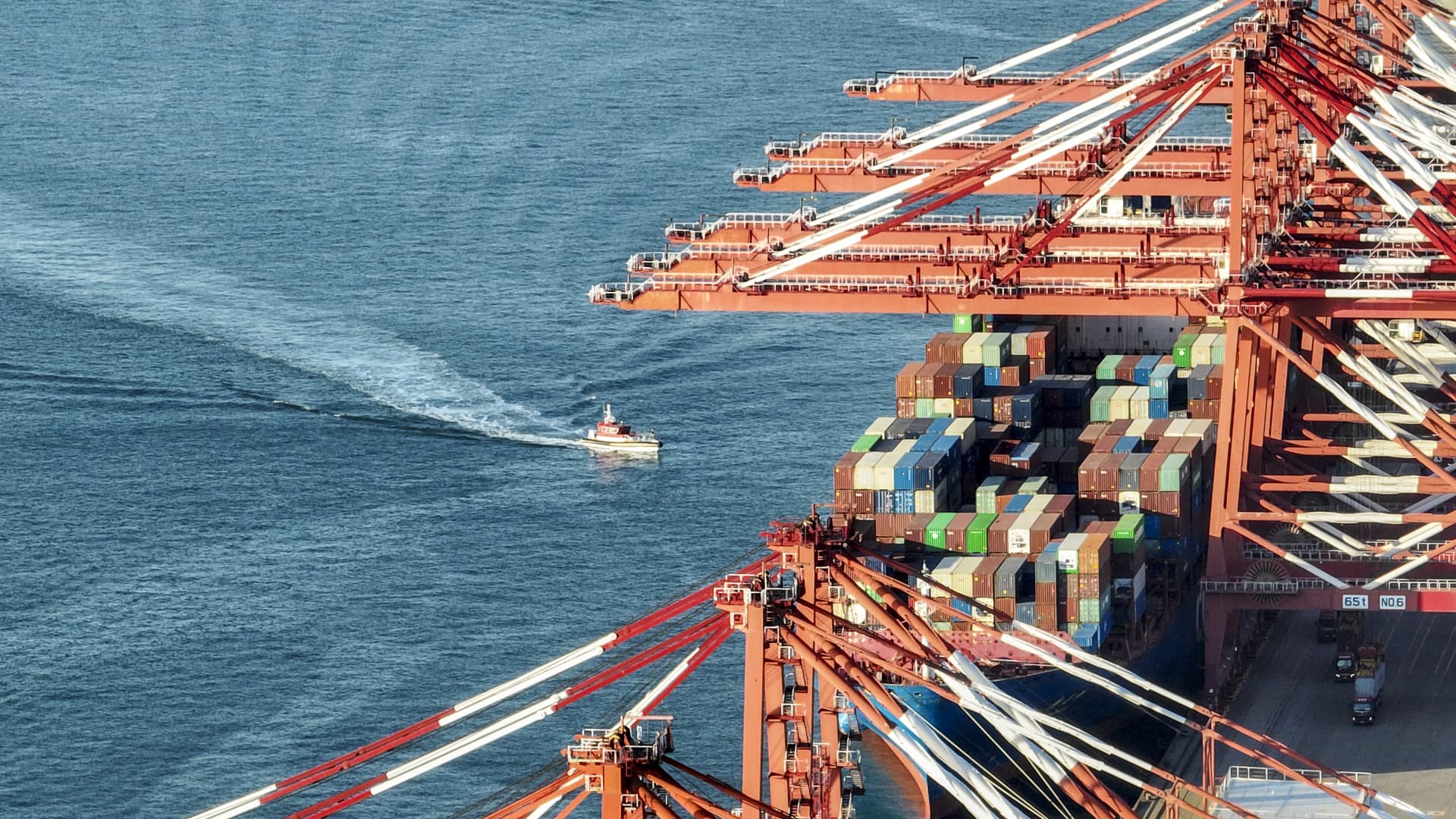
Spending cutbacks by the consumer already led to a decrease in Chinese manufacturing orders by U.S. importers of 20-30%, as recently reported by CNBC, and more recent data from U.S. shippers shows the housing market slowdown is now showing up in the Asian supply chain data too.
“We are seeing the impact and slowdown across home appliances, white goods (items like dishwashers), and DIY products,” said Akhil Nair, senior vice president of products for Asia Pacific at Seko Logistics. “We have seen a major slowdown in furniture and home decoration especially in China and Vietnam because importers are heavy in stock.”
Inflation has led to record-level lows in consumer sentiment, but the housing market had remained strong until the Fed’s more recent posture led to the biggest weekly jump in mortgage rates since the 1980s.
“We have seen an immediate cut back in home building construction materials such as lumber,” said Spencer Shute, senior consultant of supply chain and procurement company Proxima. “This should come as no surprise given the new home sales and construction numbers.”
Taken together, the recent manufacturing orders data and housing-related orders data show how spending scrutiny by the U.S. consumer will continue to weigh on the supply chain situation and inventory planning.
General merchandise categories and orders have pulled back since March, per shippers, as a result of overstock. Major retailers including Walmart and Target surprised the market in May when they reported huge inventory levels.
The order declines are not across the board, according to the latest data.
“For other sectors like garments, sporting goods, and e-commerce, we are still seeing strong demand,” Nair said. “Major garments and shoes have not shown major declines or postponement in orders yet to my knowledge,” he added.
The American Apparel & Footwear Association (AAFA) tells CNBC they continue to see strong demand for apparel and footwear.
“Experiential shopping is materializing in our industry in two ways,” said Steve Lamar, CEO of AAFA. “First, as consumers look to outfit themselves for experiences, they need the right clothes, shoes, and equipment. Second, shopping itself – browsing stores and outlets for summertime outfits, back-to-school childrenswear, and shoes, or new back-to-work styles; touching materials; and trying on and buying your favorite fashions — remains an experience.”
Lamar added the threat of persistently high prices does remain a deep concern for retailers.
U.S. port congestion
Congestion at U.S. and European ports, and the decrease in U.S. manufacturing orders in China, highlight this week’s CNBC Supply Chain Heat Map.
Ports around the country continue to handle record imports and as Shanghai slowly reopens, this peak season is expected to be strong despite inflation fears. The reason is these orders were placed by U.S. retailers months ago.
The increase in both unscheduled and scheduled vessels arriving at the East Coast and Gulf ports is creating congestion in vessel arrivals. For now, the unloading and loading of the container ships at those ports is moving smoothly.
The West Coast ports, however, are still plagued by rail delays, and chassis being used as makeshift warehouses holding loaded containers.
The high volume of containers arriving at all U.S. ports will continue as peak season rolls on.
“We expect strong imports through the summer months as retailers finish bringing in back-to-school cargo and start bringing in holiday merchandise,” said Jon Gold, vice president, supply chain and customs policy for the National Retail Federation. “Retailers are taking into account supply chain disruptions and planning accordingly to meet strong consumer demand, despite ongoing concerns about inflation.”
German union labor strike
Negotiations between German trade union ver.di and the Central Association of German Seaport Companies (ZDS) continue after a second warning strike last week. This strike lasted 24 hours, whereas the first strike was one shift. The impact of the day-long strike impacted almost all ports in the German Northern Sea.
Sources tell CNBC an offer was presented by ZDS to the union with a final offer of a wage increase of up to 11% in 18 months. Sources hope for a conciliation procedure in which politicians or a neutral person mediate.
The delays created by the latest warning strike have added to the vessel congestion. Containerships are currently delayed by several weeks at some German ports.
The German labor battle is impacting the availability of empty containers used for both European exports bound for the U.S. and for Chinese exports. China is Europe’s No. 1 trading partner.
“The overall situation in North European ports is deteriorating,” warned Andreas Braun, ocean product director at Europe, Middle East, and Africa at Crane Worldwide Logistics. “Port congestion is on the increase as well as yard occupancy,” he said.
The first shipping lines like MSC are reacting to the current scenario with emergency storage surcharges for both imports and exports, with surcharges applied after exceeding the standard storage free time, and in addition to the standard tariffs. Braun said this surcharge is currently limited to Dutch ports only and, to date, only MSC has circulated communication relating to the additional fees, but he added, “we can assume that other ports and shipping lines will follow.”
Ocean carriers are warning customers about the impact strikes and any related slowdowns can have on the supply chain. Hapag-Lloyd issued a notice to report increased demand on trucks. Maersk indicated it would “absorb” the stoppage at its German terminals. “In the interest of minimizing any further disruption to your supply chain, we will be keeping a close eye on developments up to and during the next round of meetings between trade union ver.di and ZDS, acknowledging that further strike action is possible,” Maersk notified its customers.




